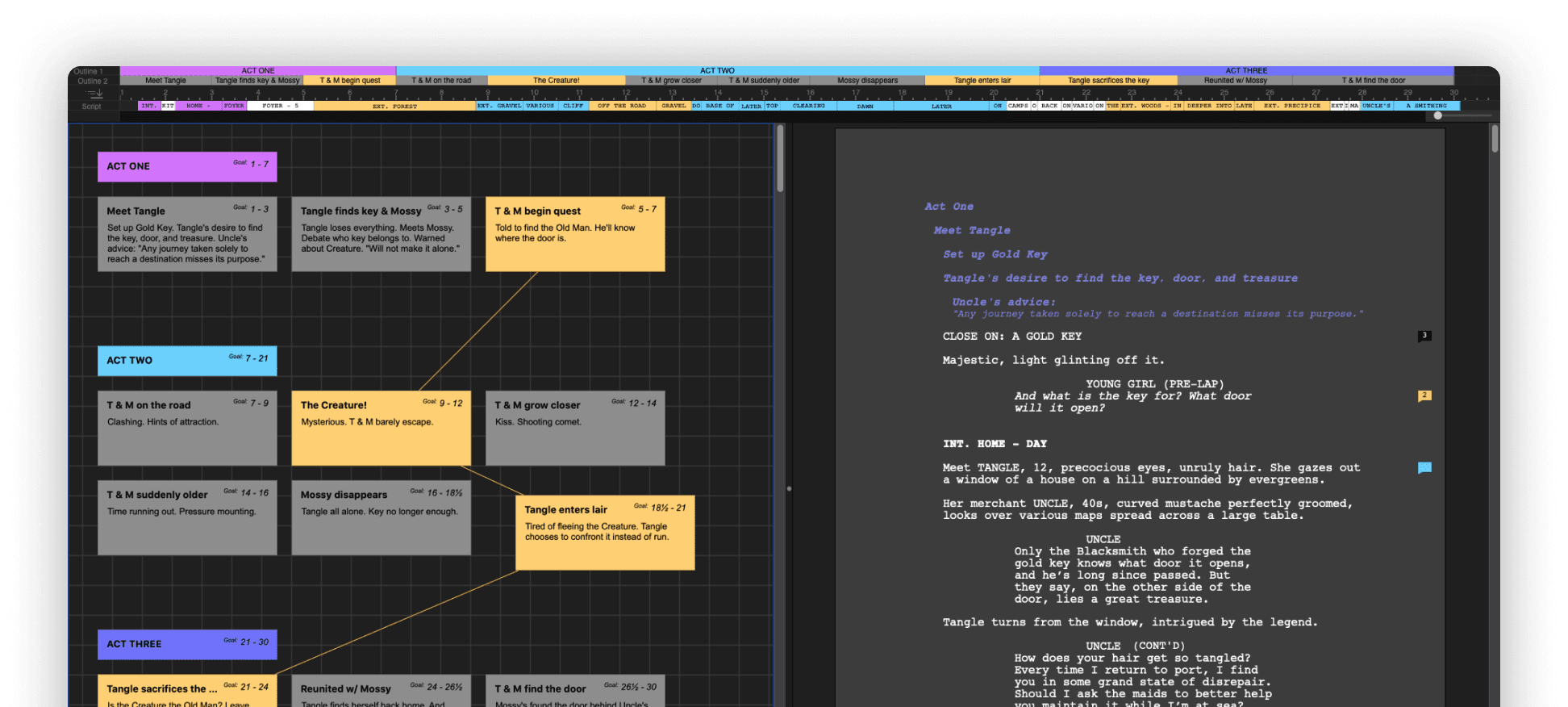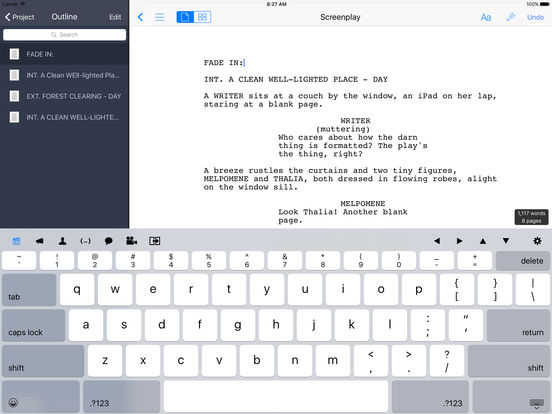
‘She quickly walked into the very small, dingy, dark room.

You need to provide the bare bones and maintain the engagement. Elaborate and intricate descriptions with reams of adjectives have little place in stage directions. The literary devices that are normally considered to be beneficial for setting the scene in writing, are largely unnecessary here. Forget everything you were taught in school about metaphors, similes and descriptive writing.

The language you need to use when writing stage directions can be one of the hardest things to get used to. Language and Style used in Stage Directions With an ensemble cast, this is particularly key as we need to get a clear grasp of how the characters are either similar to or distinguished from one another. Then after this, their name can be written in lowercase.Īge, meanwhile, is not only obviously important for understanding a character but also for the casting process. This capitalization only occurs the first time the character is mentioned in the screenplay. Instead, phrase it like this, ‘The man deals a deck of cards.’Īnother formatting detail to employ in your stage directions is to capitalize an un-introduced character’s name, followed by their age.Steer clear of using phrases like, ‘We see the man dealing a deck of cards.’.The action should be happening now, not in the past. The present tense should be used when writing stage directions. That way, the reader will get a feel of how the events will unfold when they’re actually on screen. Utilize short, punchy sentences that are easy to read, with preferably no more than two or three-line paragraphs. You want them to be caught up in the excitement of your story, not trawling through unnecessary descriptions of what the weather is like that particular day. If a screenplay reader is presented with large blocks of text there’s a risk of them getting bored or distracted. You need to write clearly and directly, avoiding big chunks of text and long-winded sentences. Stage directions aren’t supposed to be written like a long, embellished story. When it comes to starting to write your stage directions, first of all, you need to keep the format in mind.

However, a solid set of guidelines is always useful to follow in making your script as effective as possible and making sure that beleaguered script readers are helped rather than hindered in comprehending your story. Ultimately, if your script is clear in conveying the story and readable in doing so, then rules and traditions can be played with. It’s worth noting that when it comes to stage directions, the rules can be flexible.



 0 kommentar(er)
0 kommentar(er)
